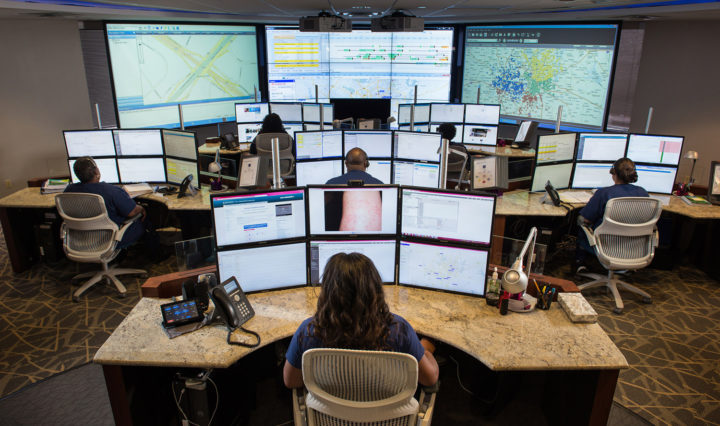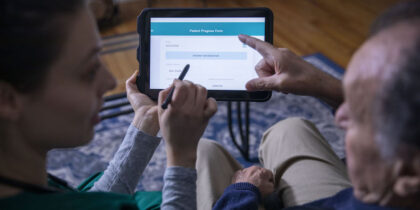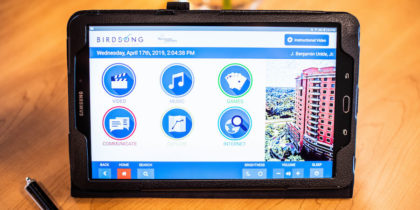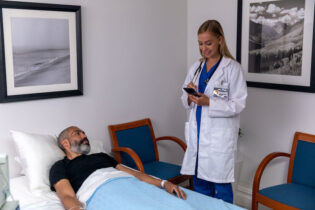When it comes to types of assistive technology that can improve senior living, wearables keep coming out on top. Heavily populated by devices that provide continuous, comfortable feedback to both wearers and caregivers, the growing wearables market continues to see advancements that senior care facilities can leverage to improve their care offerings. Two platforms in particular — smartwatches and virtual reality (VR) — stand out as natural fits for the needs and preferences of the modern senior care facilities, their residents and those aging in-home.
Advancements in New Types of Assistive Technology
As baby boomers continue to inch their way into senior status and move into more senior care facilities, the need for connected technology solutions that can help handle the expanding population only grows. Thankfully, we’re seeing advancement in core technologies that are directly tied to improved quality of life in older adults. These include indoor positioning, activity recognition and vital sign monitoring.
All of these technologies can be incorporated into wearable devices, such as smartwatches, smartphones and fitness bands that are minimally intrusive and largely familiar to increasingly tech-sophisticated seniors.
The Advantages of Smartwatches
Any wearable that allows seniors to avoid the stigma of medical alert necklaces and bracelets are already ahead of the pack. This, potentially, is where smartwatches hold the most value.
Telemonitoring Helps Reduce Readmission Rates
Learn how Ascension at Home revamped its telemonitoring program and improved in-home aftercare. Download Now
Aging patients receive access to all the medical and safety features that are available via smartwatches and their accompanying apps, but in a way that allows them to avoid “feeling old” and with the bonus of trendiness. Anything that looks similar to accessories they’ve worn all their lives will make for an easier transition into the potentially life-saving technology that’s seen so much advancement in the medical world.
Many watches also offer the ability to read texts and notifications, allowing seniors to feel connected to their prior lifestyles, or emergency contacts. These same watches though, open the door to a new world of disease management, and with 80 percent of seniors navigating at least one chronic condition, opportunities to leverage the features that smartwatches are famous for are prevalent.
Smartwatches can already act as aids in helping seniors remember when to administer medication, but as the technology progresses, the market is seeing developments such as watches replacing bulky blood pressure cuffs as well as GPS-like features used to monitor the location of patients who are prone to wandering or getting lost. Some facilities are even using motion sensors (common in smartwatches) to gain insight into behavior that was previously unmonitored, such as how often a resident turns while in bed.
Reconnecting Lives with Virtual Reality
Aging well is about more than just keeping the body healthy. Experiences and entertainment are what keep life interesting and worth living, especially in old age, and wearables in the form of virtual reality platforms, have the potential to make strong contributions here.
The technology has worked for 103-year-old Virginia Anderlini who, as of last year, was already on her sixth trip into a virtual reality environment. These are more than just mini-vacations though. Immersion in virtual environments may encourage brain stimulation and even reactivation for some neuropathways by drowning out, or at least distracting from, negative experiences such as pain or confusion. They can also potentially reduce anxiety, loneliness and disorientation.
This is far from a new concept. A researcher at the University of Washington, Hunter Hoffman and psychology professor, David R. Patterson have applied immersion VR for pain control as far back as 1996. This application of virtual reality holds particular promise for dementia patients who have specific psychosocial needs and frequently feel disconnected from life.
Investing in Implementation
Considering the coming influx of baby boomers and their demands for tech-enabled environments, it will be essential that senior community leaders invest the time and money required to properly implement technology solutions that best suit their residents. Successful implementation of any wearable solution will require flexibility above all else. Each patient is different, not only in their preferences and medical needs, but also in their overall comfort and familiarity with technology.
It will be critical that facility managers seek out partners that have a proven history of flexibility, an understanding of how to develop sophisticated connected technology solutions as well as the ability to provide financing options that will allow them to better manage their new financial obligations.
Ultimately, these types of assistive technology not only aim to keep the aging population connected but also safe — whatever their environment.
Another key healthcare trend is the digital health advisor, which uses technology and healthcare interoperability to improve efficiency and encourage patients to take an active role in their health.








